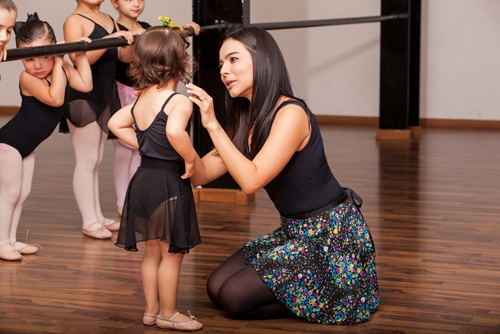Instructors can often get stuck using the same phrases while teaching dance. Saying things like, “that was great” or “don’t slouch” can quickly become a habit and lose meaning to students. It’s a tricky task to figure out what language students respond to, especially when you have a number of different classes.
However, if you can learn to communicate efficiently with your dance students, you’ll grow into a much better teacher and your pupils will leave with the knowledge and skills they desire.
Use Action Language
Dance Teacher Magazine explained that the more descriptive you can be with your instructions, the better students will understand. Phrases like “jump higher” are vague and hard to measure. When teaching dance in class, use a descriptive action to explain what you’re looking for. A good alternative might be, “Imagine you let a balloon float up to the ceiling, then try to jump up to grab the string.”
When students have an action with a goal attached, it will be easier to complete the action. It will also make an impression on your dancers so you won’t have to remind them as often. Similarly, use specific imagery when you’re giving praise. Don’t just tell students their run through was great, but explain exactly what about it was successful.
Use “Specific” Language
The DanceExec put together an awesome article talking about how to correct sloppy, floppy dance performance fingers by giving specific instructions.
By being consistent with how you ask dancers to do a certain movement, you can clean up sloppiness and make dancers appear more fluid, controlled, and deliberate.
Accentuate Positives
Try to banish the words “don’t” and “stop” from your teaching vocabulary. Instructions that focus on negatives won’t be as well received as those that focus on positives. Four Dancers suggested that students will respond better to a correction if it’s prefaced with praise.
So instead of saying, “Don’t scrunch your shoulders,” approach the topic from a different angle. Commend the student on keeping their arms flowing while they dance, and suggest they try extending that motion up through their shoulders.
Describing to students what you want is a more productive way to teach than telling students what you don’t want.
Adjust as You Go
Finally, give yourself permission to experiment and try new things. Each class you teach will have a different dynamic, and there won’t be a one-size-fits-all communication style. Just like your students are new to your class, you are new to these students!
Allow yourself a little time to figure out how to best communicate with them – you don’t have to get it right from day one.



